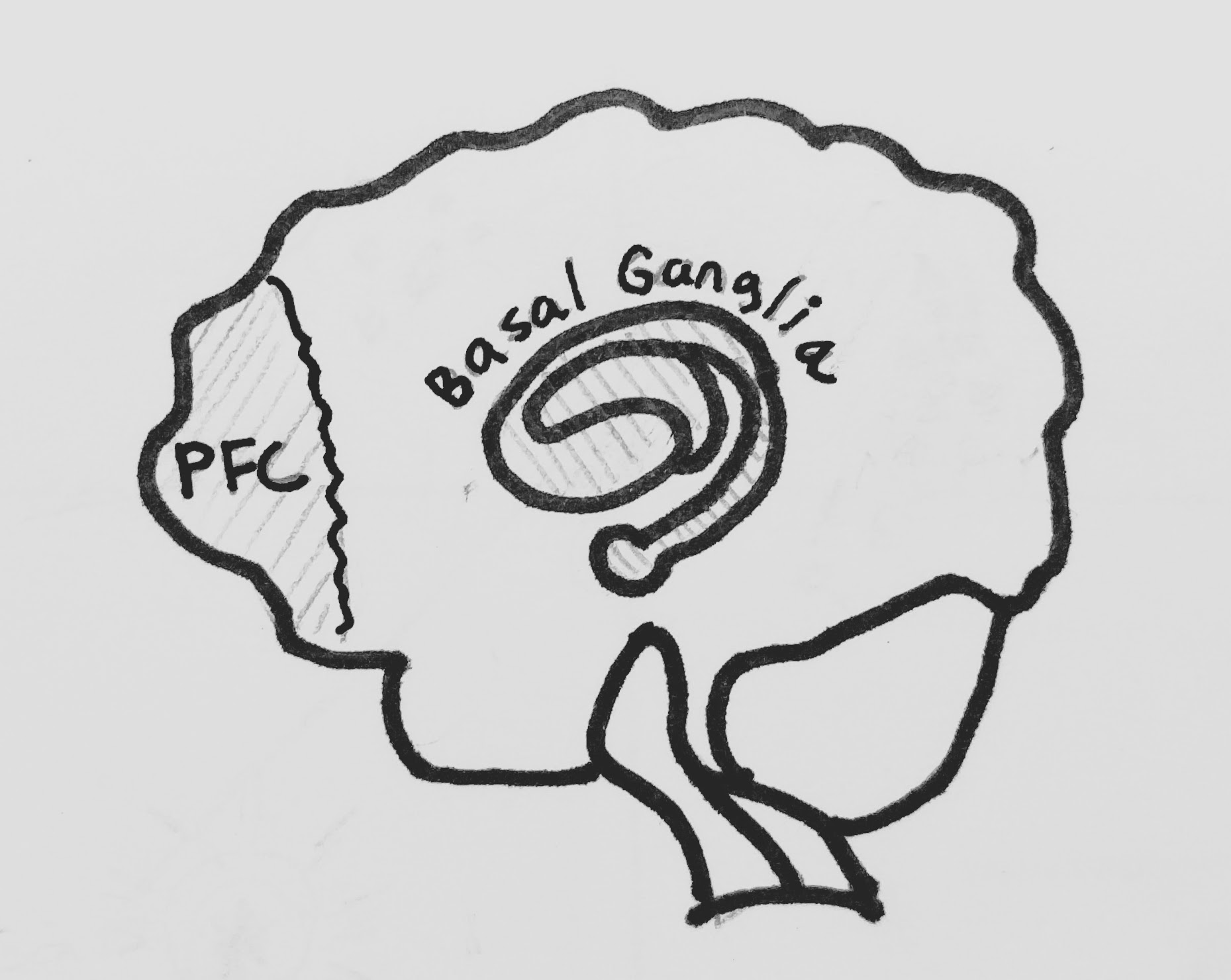Your Brain on Cognitive Creativity – With Illustrations

Ever wonder what’s going inside that noggin of yours when you experience a moment of insight that leads to a creative solution? I’m familiar with creativity and exercises to get those creative juices flowing, but, until recently, I hadn’t spent much thought, or any at all really, on the cognitive neuroscience of creativity – the neural connections and mental processes that occur during a creative episode.
Creativity is defined as the production of something valuable, useful, novel, original, and/or worthwhile. There are also different types of creativity. Arne Dietrich (2004) proposed that there are four types of creative insights based on different brain activities that can be spontaneous or deliberate and cognitive or emotional. The relationships between these activities are best visualized as a matrix.

There are 4 types of creativity: deliberate, cognitive; deliberate, emotional; spontaneous, cognitive; and spontaneous, emotional (Dietrich 2004).
For the sake of this blog, I will illustrate and discuss the cognitive types of creativity: deliberate, cognitive and spontaneous, cognitive. My source of inspiration is a blog post by Susan Weinschenk. Her blog is based on the brainy research of Arnie Dietrich.
Deliberate, Cognitive Creativity
Deliberate and cognitive creativity is a mental process that relies heavily on an existing body of knowledge and is something that we are consciously aware of. The Pre-Frontal Cortex (PFC) of your brain is a major player in deliberate and cognitive creativity. It allows you to sustain focused attention on a problem as well as connect information among your existing body of knowledge from different parts of your brain.
The PFC allows you to consciously think about something and then piece together information to form an original idea.

For example, a designer who tests their designs regularly builds a body of knowledge. They learn why designs test well and why some don’t. When faced with a new problem, the designer can consciously focus their attention on all the things they have learned from past tests and make connections between this knowledge to discover new concepts that solve the problem at hand.
Spontaneous, Cognitive Creativity
Spontaneous, cognitive creativity is an unconscious and unpredictable mental process. But it also requires an an existing body of knowledge just like deliberate, cognitive creativity.

The basal ganglia of the brain plays an active role in this type of creativity. The processes that happen here are not something we are consciously aware of.
Spontaneous, cognitive creativity can activate when your brain stops working on something and shifts to your unconscious mind to work on it instead. Your unconscious work is done in the basal ganglia part of your brain. When you stop working on a problem and do something completely unrelated, you give your PFC time to make new connections among your existing body of knowledge without your focused awareness. You can take a walk or sit in an orchard under an apple tree like Isaac Newton did when he had his famous “a-ha” moment about gravity. You’re not Isaac Newton, so you take a walk instead where you see something that triggers you to make a spontaneous connection between what you saw and your previous problem. This is your “a-ha” moment (but it’s probably not as profound as Isaac Newton’s).

The legend goes that Isaac Newton discovered gravity when an apple fell on his head. The more likely story is that he observed apples falling which lead him to piece together his law of universal gravitation based on his past experiences and knowledge (http://www.history.com/news/ask-history/did-an-apple-really-fall-on-isaac-newtons-head).
You might be wondering how all this talk about our brains and creativity applies to the real world. Here’s a nice little list of takeaways.
- Everyone is creative. Cognitive creativity is based on expertise. Knowing a lot about one or more things allows you to make new connections and form original ideas.
- Deliberate, cognitive creativity can be planned. Experts intentionally leverage their body of knowledge to come up with creative solutions.
- Spontaneous, cognitive creativity is difficult to plan for because It’s hard to know if and when an “a-ha” moment will occur.
- Don’t forget there are two other types of emotional creativity; spontaneous and deliberate. Check out Susan Weinschenk’s blog: 100 Things You Should Know About People: #57 — There Are 4 Types Of Creativity for more information.

1 Comment